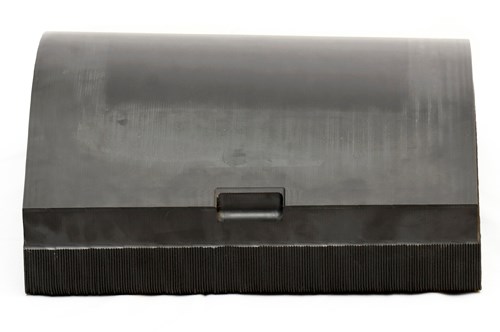3-D printing autoclavable composite molds
The polymer additive manufacturing research team at the Department of Energy’s Manufacturing Demonstration Facility at Oak Ridge National Laboratory reports that it has successfully fabricated autoclave-capable carbon fiber composite molds, manufactured using large-scale 3D printing/additive manufacturing.

The polymer additive manufacturing research team at the Department of Energy’s Manufacturing Demonstration Facility (MDF) at Oak Ridge National Laboratory (Oak Ridge, TN, US) reports that it has successfully fabricated autoclave-capable carbon fiber composite molds, manufactured using large-scale 3D printing/additive manufacturing.
Oak Ridge National Laboratory (ORNL), in collaboration with numerous industry partners and materials suppliers such as TechmerES (Clinton, TN, US) and BASF (Wyandotte, MI, US), developed these molds from two high-temperature thermoplastic materials with varying carbon fiber loads, which have been tested and proven in the autoclave process.
The first material combination features polyphenylene sulfide (PPS) reinforced with high loading of carbon fiber supplied by Techmer. The second material combination features a polyphenylsulfone (PPSU) supplied by BASF, compounded by Techmer and with lower carbon fiber loading.
Researchers at ORNL processed the materials on a Big Area Additive Manufacturing (BAAM) machine developed in collaboration with Cincinnati Inc. (Cincinnati, OH, US). They fabricated nine concave-shaped molds in total, each measuring about 1m by 0.8m (see photo). Each tool was either machined and uncoated or coated and not machined, in order to assess vacuum-holding capability of the molds.
Subsequently, the autoclaved molds, trialed at Boeing’s St. Louis facility (St. Louis, MO, US), withstood two cycles at temperatures of 250°F and 30 psi and a second cycle of 350°F and 90 psi for 2-3 hours per cycle. This included a prescribed heat up, a two-hour hold and a prescribed cool down. Dr. Ahmed Hassen, postdoctoral researcher at ORNL, and Dr. Vlastamil Kunc, polymer materials team lead at ORNL, say that the autoclave trials provided promising results, with only 0.002-0.004 inch maximum deformation after two cycles. How many autoclave cycles these 3-D printed tools might tolerate remains to be determined in future testing.
The benefits of autoclave-capable, 3-D printed molds are obvious in terms of time, material and process cost savings opportunities. “Companies can save a lot of time by printing molds in-house. They can have their own printers. They no longer need to wait for months to get their parts made,” says Hassen,.
“It is the understanding of many facets of additive manufacturing and material science which allowed the team to successfully demonstrate how this technology can benefit American tool and die efforts, as well as increase US global manufacturing competitiveness,” says Kunc.
It is expected that autoclave-capable materials for large-scale 3D printing will be commercially available this year.
Related Content
-
A new era for ceramic matrix composites
CMC is expanding, with new fiber production in Europe, faster processes and higher temperature materials enabling applications for industry, hypersonics and New Space.
-
Cryo-compressed hydrogen, the best solution for storage and refueling stations?
Cryomotive’s CRYOGAS solution claims the highest storage density, lowest refueling cost and widest operating range without H2 losses while using one-fifth the carbon fiber required in compressed gas tanks.
-
Plant tour: Middle River Aerostructure Systems, Baltimore, Md., U.S.
The historic Martin Aircraft factory is advancing digitized automation for more sustainable production of composite aerostructures.











.jpg;maxWidth=300;quality=90)



